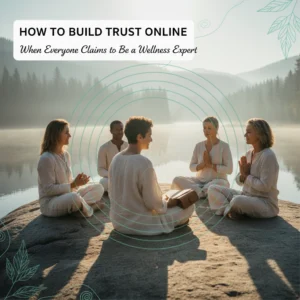YouTube has become one of the most powerful platforms for learning. People turn to it for tutorials, insights, and explanations across nearly every topic imaginable. If you want to share your expertise and create an audience that values your voice, building an educational channel is one of the best ways to do it. Success does not come from chance. It comes from clarity, consistency, and a thoughtful plan.
1. Define Your Purpose
Every strong channel starts with a clear sense of purpose. Ask yourself what you want viewers to walk away with. Is your main goal to teach and inspire, to position yourself as a trusted authority, or to attract new clients and students. By defining your purpose upfront, you create content that feels aligned and intentional rather than scattered. A clear mission also helps you decide what belongs on your channel and what does not, so you stay focused instead of chasing trends.
2. Identify Core Topics
A mistake many new creators make is trying to cover too much at once. Instead, choose three to five core themes that you can return to consistently. This gives your channel a rhythm and helps your audience know what to expect. For example, you might share practical lessons, demonstrate exercises, tell short stories, highlight tools or techniques, or preview upcoming events. Rotating between a handful of defined categories keeps your channel both organized and fresh.
3. Choose Video Formats
Once you know your topics, decide on the formats that suit your style. Not every video needs to be the same length or structure, but having a few go to formats makes filming easier and keeps your content predictable in a good way. Short lessons in the five to eight minute range are perfect for teaching one concept. Longer guided practices around ten to fifteen minutes allow viewers to follow along in real time. Quick three to five minute reflections are great for personal insights, while short event previews keep your community informed. You can also experiment with YouTube Shorts for under sixty second takeaways. The key is to choose formats you can commit to without burning out.
4. Organize Into Series
Viewers love consistency, and creating a series makes your content feel like a complete journey rather than isolated uploads. For instance, instead of one video on basics, create a three part series where each installment builds on the last. You could also design a recurring segment that viewers come to expect, like a weekly tip, a monthly Q and A, or a themed set of practices. Series not only encourage people to subscribe but also give them a reason to binge watch your videos.
5. Brand Your Channel
Branding on YouTube is about more than just a nice logo. It is about creating a look and feel that is instantly recognizable. Use a consistent color palette, typography, and logo placement across your thumbnails, channel banner, and video intros. Keep your thumbnails simple but bold. High contrast text, expressive imagery, and a clean background are key. Inside your videos, focus on good lighting and clear audio, which matter far more than fancy equipment. A short branded intro and outro can add polish, while a consistent title card style helps tie everything together. Over time, these small details create a professional and trustworthy image.
6. Build Engagement
YouTube is a conversation, not a lecture. The more you engage your audience, the more the platform will reward you. At the end of each video, encourage viewers to comment by asking a simple question, such as what tip resonated most or what they would like to learn next. Remind people to subscribe and explain why. Subscribing means they will not miss the next lesson or practice. In your descriptions, provide links to additional resources, related videos, or downloadable content. By turning passive viewers into active participants, you grow not just an audience but a community.
7. Create a Workflow
The easiest way to lose momentum on YouTube is to wing it. A simple workflow can keep you consistent without overwhelming your schedule. Start by planning topics one or two months ahead. Batch film several videos in one session so you are not constantly setting up. Use templates for editing so you do not reinvent the wheel each time. Publish on a schedule that you can realistically maintain. Weekly is great, but bi weekly can also work if it keeps you consistent. Do not forget to repurpose. One long YouTube video can become multiple short clips for social media or a written blog post for your website.
8. Track Progress
In the early days, it is easy to obsess over subscriber counts, but that is not the most important measure. Instead, focus on consistency. Are you publishing regularly. Are your videos aligned with your purpose. Once you have a library of content, start looking at key metrics like average watch time, click through rate on thumbnails, and engagement in comments. These numbers show what your audience finds valuable and help you refine your approach. Growth on YouTube is often gradual, but steady improvement in these metrics will eventually translate into a loyal audience.
9. Quick Checklist
To keep everything organized, here is a checklist you can use as a roadmap:
- Define your purpose and audience
- Choose three to five topics to rotate between
- Decide on two to three video formats you can sustain
- Draft your first ten video ideas
- Brand your channel with consistent visuals
- Batch record and edit videos for efficiency
- Publish on a consistent schedule
- Promote each video across other platforms
- Review your analytics and refine over time
Final Thought
An educational YouTube channel is more than just a place to post videos. It is a living library of your expertise. Each upload becomes part of a collection that your audience can revisit, share, and learn from. When you approach it with clarity, consistency, and intention, you are not just making videos. You are creating a long term resource that continues to build trust and impact long after it is published.





